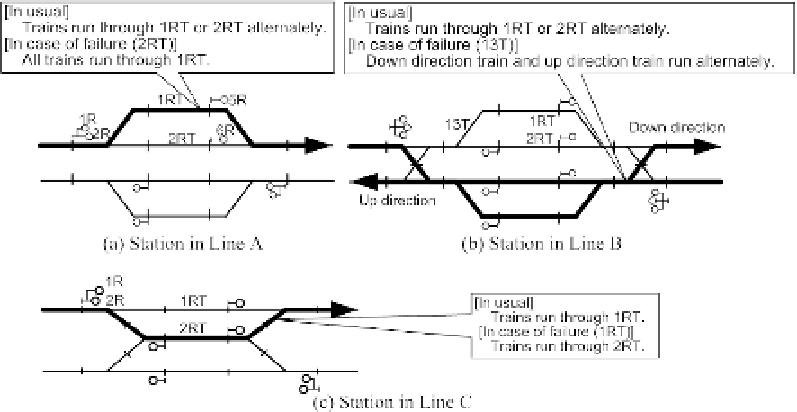Information Technology Reference
In-Depth Information
In a conventional system, all train operation will be stopped if an interlocking
device fails. However, in this system, impact of a failure may be restricted in
many cases because the interlocking function is not performed by centralised
unit.
Failure of equipment We have estimated the loss at Station 13 (Line A,
Line B) and Station 7 (Line C). The train operation status under failure is
defined in advance. Two examples are given in Fig.6.
Fig. 6. Examples of Alternative Routes under Failure
The failure rates and down times of each equipment are assumed as listed
in Table 2 and Table 3. The values in Table 2 are estimated from times of
suspended train operation due to failures of signalling systems for about five
years, which are recorded in the Railway Safety Database managed by our
institute. However, the radio based system and the new system do not have
actual records. For the system based on radio communications, the value for
a point machine is the same as in Table 2, and the values for the ground
control unit and radio base station are the same as those of an interlocking
device in Table 2. In Table 3, the value for the radio terminal is assumed
considering that it does not have an interlocking function of a whole of a
station and its hardware may not be as complex as the ground control of
radio based system.
Fig.7 shoes the results of the trac simulation of the line B in the case
where the track circuit 13T fails (Fig.6 (b)). In this case, the train headway
becomes 177 seconds while the trains are operated using alternative routes.
The number of trains that can run through the station depends on the down
time of each model system, and is approximately from 50 to 70% of the

